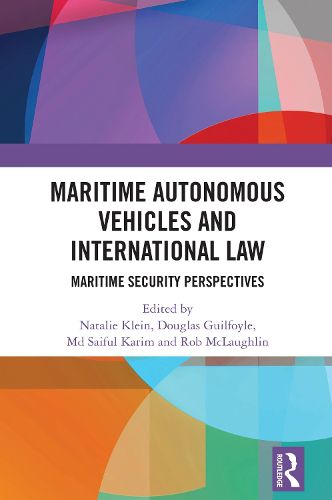Readings Newsletter
Become a Readings Member to make your shopping experience even easier.
Sign in or sign up for free!
You’re not far away from qualifying for FREE standard shipping within Australia
You’ve qualified for FREE standard shipping within Australia
The cart is loading…






Maritime autonomous vehicles (MAVs) have the potential to radically alter all uses of maritime space, with technology progressing faster than the law. This book explores the current international legal framework and the options available to regulate maritime security in the face of emerging technologies.
MAVs are starting to play a role not only in policing and military security but also for the perpetration of maritime crimes. Through discussing the existing international legal framework for combating maritime security threats, the book will consider the use of MAVs by states for various security purposes and the potential dangers of MAVs in the hands of non-state actors. As the intersection of maritime technology with international maritime security law is crucial to a safe future for all, this timely book makes essential suggestions to adapt existing legal frameworks to match emerging technologies. Addressing critical questions such as who exercises jurisdiction when ships are remotely controlled, how jamming technology may be lawfully deployed and what force may be permissible during maritime law enforcement, this book identifies a diversity of current legal gaps and problems and makes suggestions as to how to rectify them.
This book will be of interest to students and scholars in the field of the law of the sea, maritime security and emerging technologies.
$9.00 standard shipping within Australia
FREE standard shipping within Australia for orders over $100.00
Express & International shipping calculated at checkout
Maritime autonomous vehicles (MAVs) have the potential to radically alter all uses of maritime space, with technology progressing faster than the law. This book explores the current international legal framework and the options available to regulate maritime security in the face of emerging technologies.
MAVs are starting to play a role not only in policing and military security but also for the perpetration of maritime crimes. Through discussing the existing international legal framework for combating maritime security threats, the book will consider the use of MAVs by states for various security purposes and the potential dangers of MAVs in the hands of non-state actors. As the intersection of maritime technology with international maritime security law is crucial to a safe future for all, this timely book makes essential suggestions to adapt existing legal frameworks to match emerging technologies. Addressing critical questions such as who exercises jurisdiction when ships are remotely controlled, how jamming technology may be lawfully deployed and what force may be permissible during maritime law enforcement, this book identifies a diversity of current legal gaps and problems and makes suggestions as to how to rectify them.
This book will be of interest to students and scholars in the field of the law of the sea, maritime security and emerging technologies.